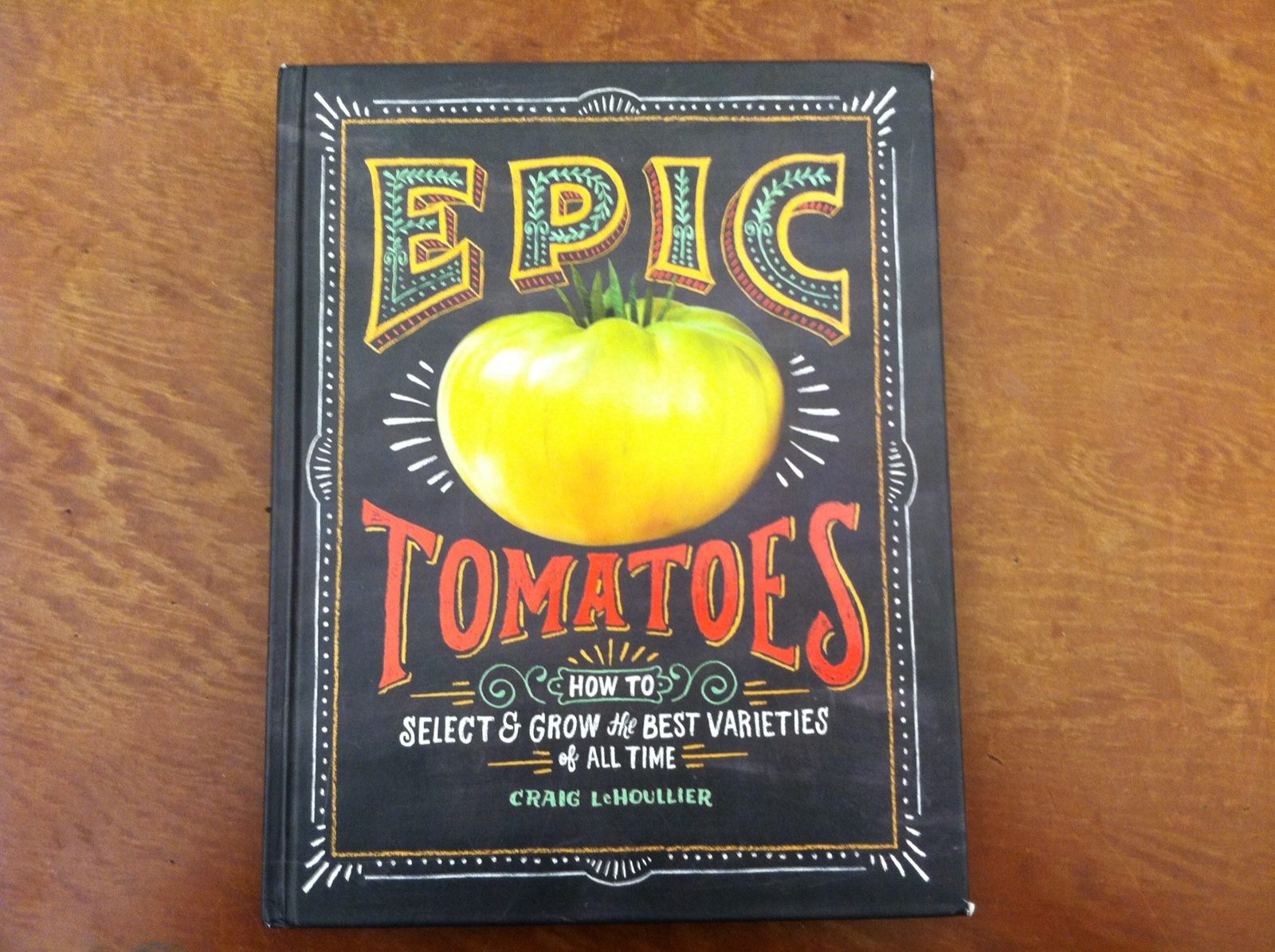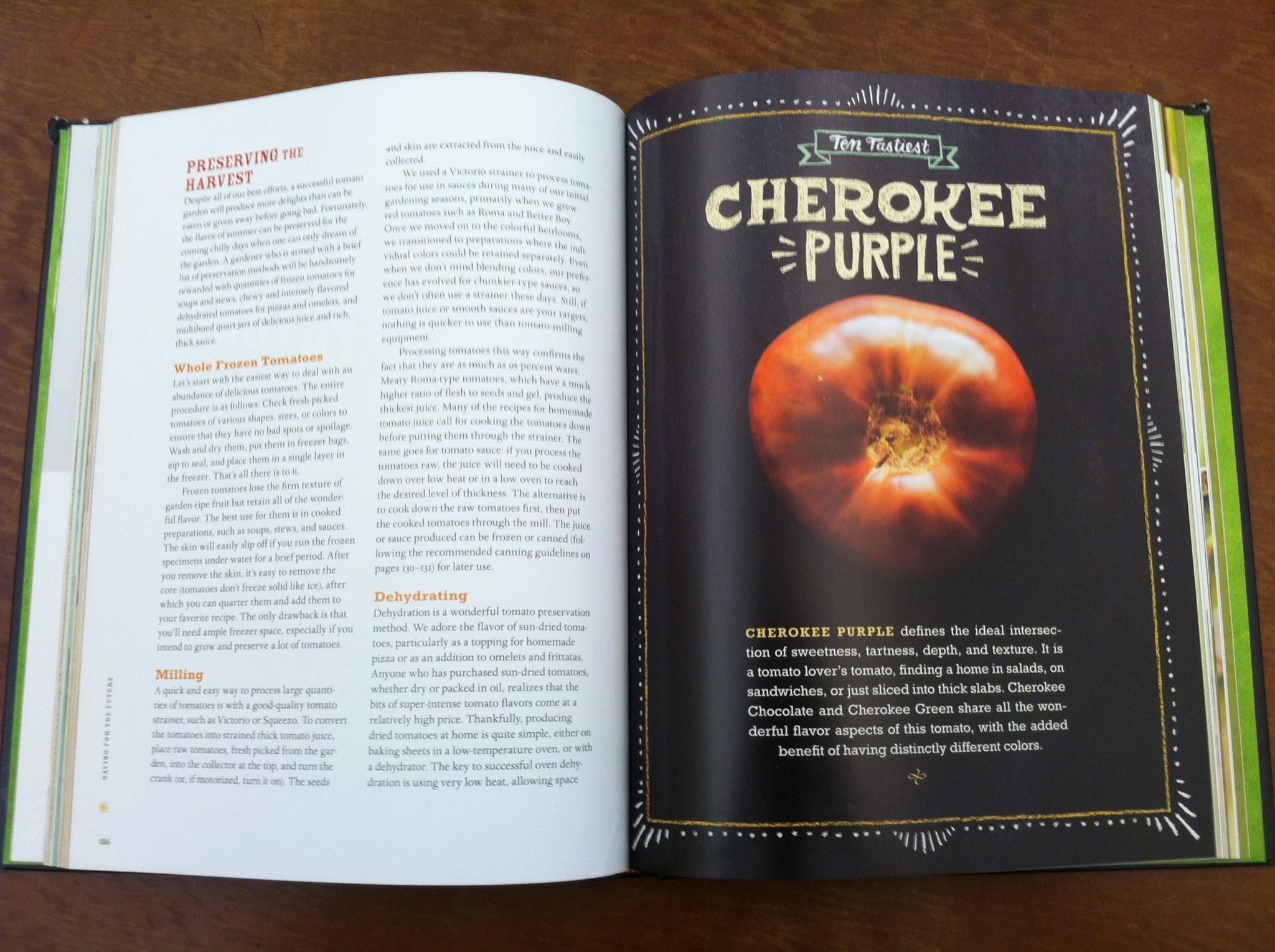Here at the farm, we’re in the midst of mad preparations for this weekend’s 12th Annual Great Tomato Celebration, which runs May 19th through 21st, from 9 a.m. to 5 p.m. daily, rain or shine. The weather is set to be mostly lovely (which, we have to say, always improves everyone’s mood a bit), and we’re raring to go.
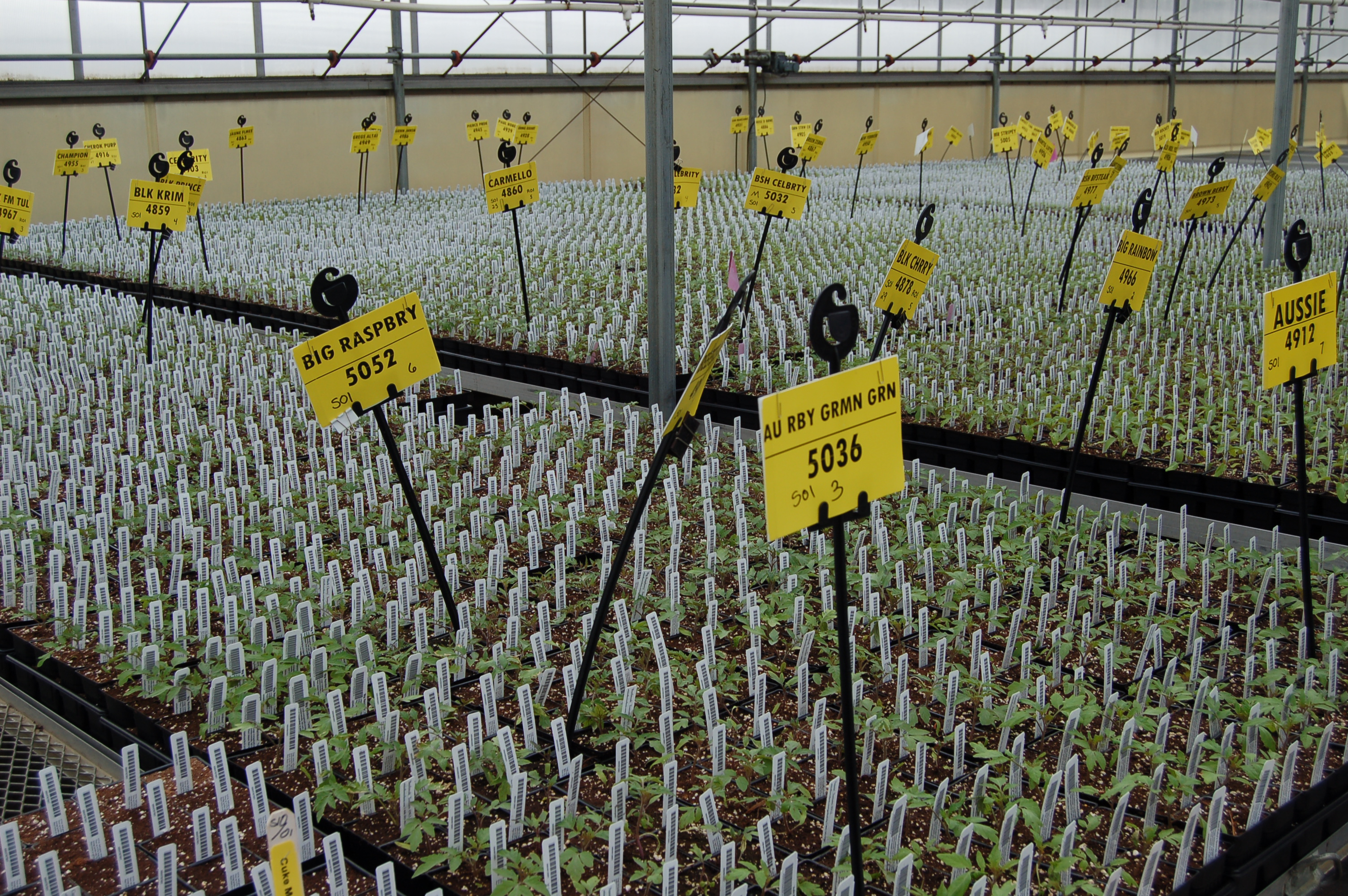
On Thursday, staff members will set out tables in the open field adjacent to the store. As the sun rises Friday morning, our tractors will be buzzing back and forth to the greenhouses and warehouse ferrying flats of Tomato seedlings, vegetable starts, herbs, growing supplies, container pots, and anything else we think gardeners might need. Tomato aficionados, some from as far away as Vermont and Massachusetts, tend to arrive early, and at the stroke of 9 a.m., the shopping begins! Gardeners who know just what they want can be seen bolting up the hill, sometimes running to claim their favorites. Their lists in hand, they work the aisles, filling their wagons. Others adopt a more leisurely pace, scanning the signs that describe each Tomato variety and asking questions of staff members, who are always happy to answer and to steer shoppers to favorite selections.
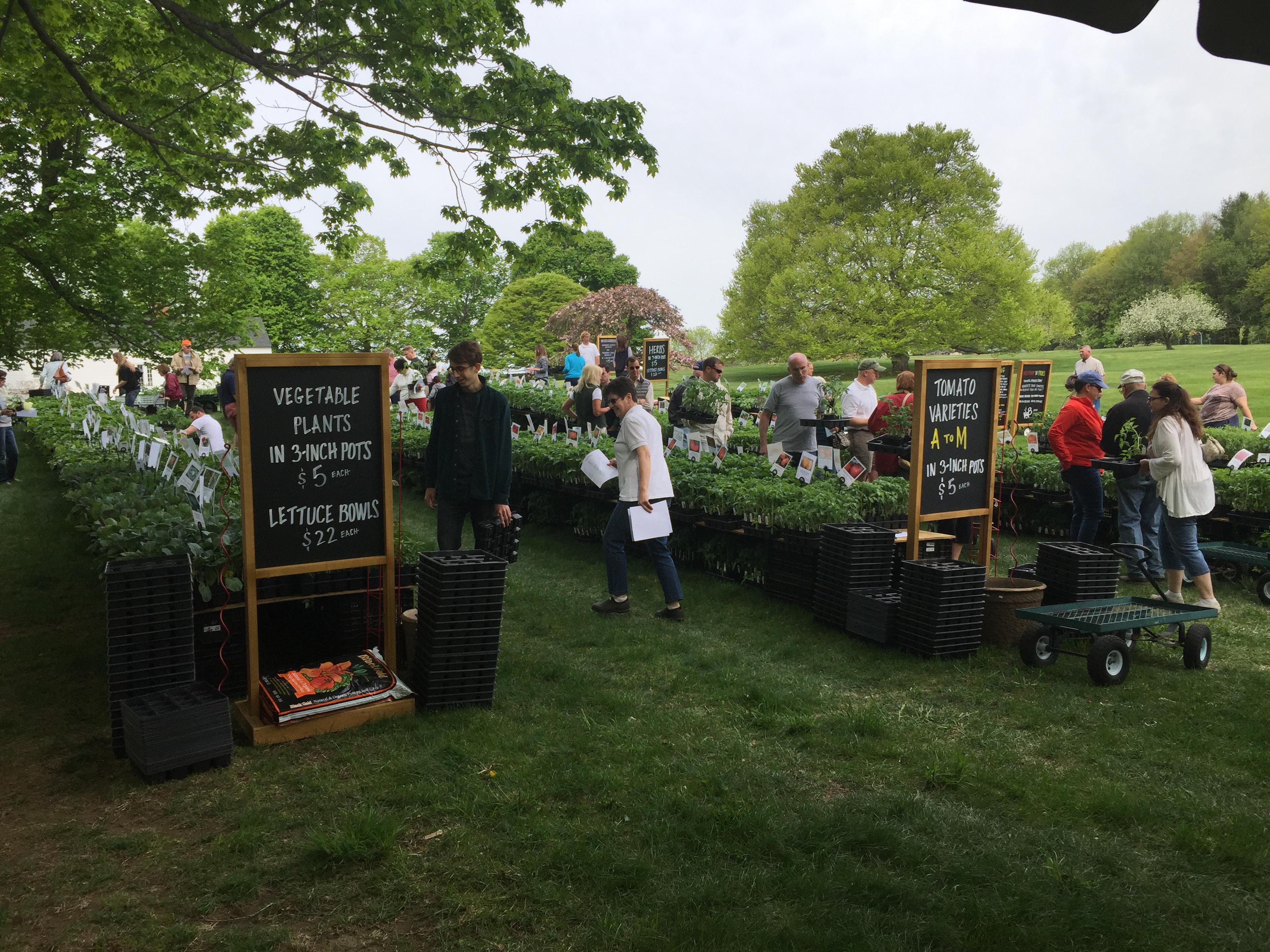
This year, we’re pleased to be offering more than 130 varieties of Tomatoes, including highly coveted heirlooms and bestselling modern hybrids (all non-GMO), and everything else you may want for this season’s kitchen garden including savory herbs and veggie plants.
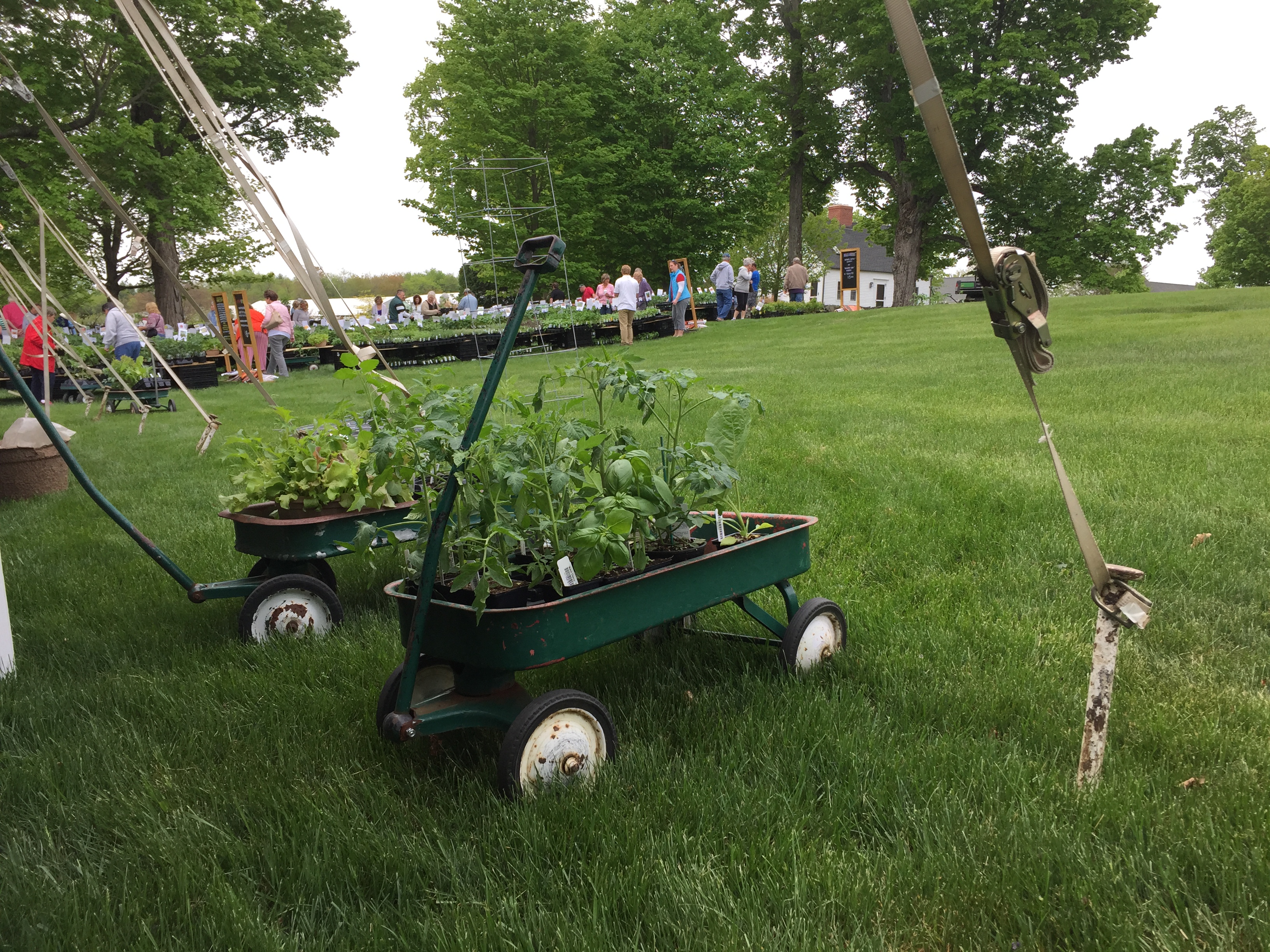
On Friday, we’re thrilled to be welcoming nationally recognized Tomato expert Craig LeHoullier, author of the award-winning book Epic Tomatoes. He’ll give two free talks on May 19th only. (For a few excerpts from his terrific book, read below.) For times and more details, click here.
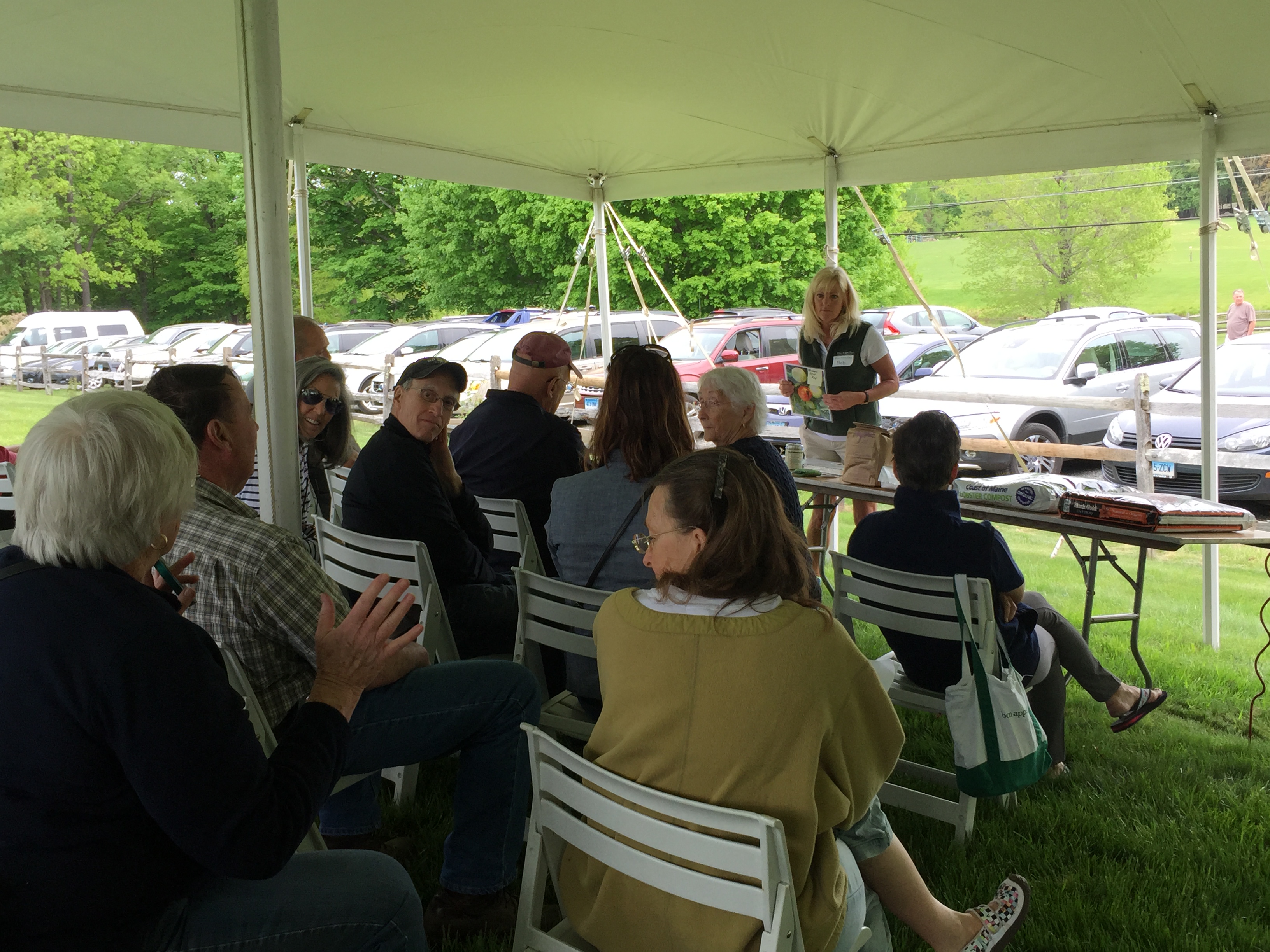
Also on tap to offer Tomato-growing tips and answer questions is White Flower Farm’s Nursery Manager Barb Pierson, who will give two talks on Saturday and also be available each day to answer questions. Chef Charlene Goodman Dutka, owner of Ciesco Catering in Torrington, presents Grow It, Cook It, Eat It, a live cooking demonstration that focuses on Tomatoes on Saturday afternoon. For times and a complete schedule of events, click here.
If you’re hungry after rounding up what you need for your kitchen garden, Ciesco Catering’s truck will be selling delicious, made-to-order food.
See you at the celebration!
While you’re shopping, consider picking up a copy of Craig LeHoullier’s Epic Tomatoes. This splendid book is stuffed with all sorts of facts and information about Tomatoes – from their early history in this country, to definitions of the different types, to profiles of individual varieties, to tips for planting, growing, staking and harvesting. You can read this book from cover to cover, or keep it around to dive into now and again. It’s a delightful read, and a wonderful resource for those of us who grow and love to eat Tomatoes.
Here’s a somewhat condensed version of LeHoullier’s account of the early history of Tomatoes in America:
“The Mayans and Mesoamerican people domesticated the tomato plant and first used it in cooking . . . By the early nineteenth century, tomatoes were present in many towns across America, though it appears most people didn’t eat them . . . Most people had no idea how popular the tomato was becoming in Europe . . . [and] The tomato had a reputation for being poisonous . . . The most famous early American tomato story is the daring public tomato consumption – perhaps – by Robert Gibbon Johnson in Salem, New Jersey, reported to have occurred in 1820. . . . Hundreds of onlookers reportedly traveled from far and wide to witness this remarkable event . . . Johnson bit into a tomato, some onlookers fainted, and, with Johnson suffering no ill effects, the tomato industry in America began.”
At the farm, we’re often asked to define hybrid, heirloom, open-pollinated, determinate and indeterminate Tomatoes. Here are LeHoullier’s definitions, just in time to help with your shopping:
Hybrid Tomatoes
“A hybrid tomato is grown from seed collected from a fruit that developed from a process known as crossing. Most simply described, pollen from one parent is directly applied to the pistil of another parent. Prior to the cross, the anther cone (the pollen-producing part) is removed from the receiving parent so that the flower doesn’t self-pollinate as it typically would.”
Open-pollinated Tomatoes
“Also referred to as non-hybrid, open-pollinated tomatoes have stable genetic material, and seeds saved from open-pollinated varieties will (unless cross-pollinated by bees) replicate the parent variety. All heirloom varieties are open-pollinated, but not all open-pollinated varieties are considered heirlooms.”
Heirloom Tomatoes
“An heirloom is an open-pollinated variety that has history and value embedded within its story.”
Indeterminate Tomatoes
“This class of tomatoes is by far the most common, and its members grow upward and outward continually until killed by frost or disease. Indeterminate tomatoes have a central main stem from which side shoots, or suckers, grow at a 45-degree angle outward from the attachment point of the leaf stems. In turn, each sucker of side shoot acts as an additional main stem and produces its own side shoots. The central stem of an indeterminate tomato, if vertically staked and tied, will easily exceed 10 feet by the end of the growing season. Flowering clusters appear at varying intervals along the main stem and side shoots, ensuring continual fruit potential until the plant dies: this allows for continual and extended harvest throughout the growing season. Another important characteristic of indeterminate varieties is the relatively high ratio of foliage to fruit, and all of that added photosynthesis means a significantly higher flavor potential when compared with determinate varieties.”
Determinate Tomatoes
“Determinate varieties are far less common than indeterminate varieties; the gene that produces determinate growth habit didn’t appear until the 1920s. Determinate varieties look identical to indeterminate varieties as young seedlings, with the same stem width and foliage shapes and textures. There is a genetic component, however, that signals an end to vertical growth, emergence of flower clusters at the end of flowering branches, and massive fruit set over a very concentrated time span. This leads to a very narrow window for fruit ripening, which makes determinate varieties very attractive for commercial ventures that benefit from picking the fruit in just a few rounds of harvest. Because of the way the flowers appear, any pruning of this type will significantly reduce yield. In addition, the very high ratio of fruit to foliage means less photosynthesis: as a result, the vast majority of determinate tomato varieties have less flavor intensity and potential than indeterminate varieties (though there are always exceptions). Because of their compact growth, determinate tomato varieties are perfect for container gardening and caging.”

